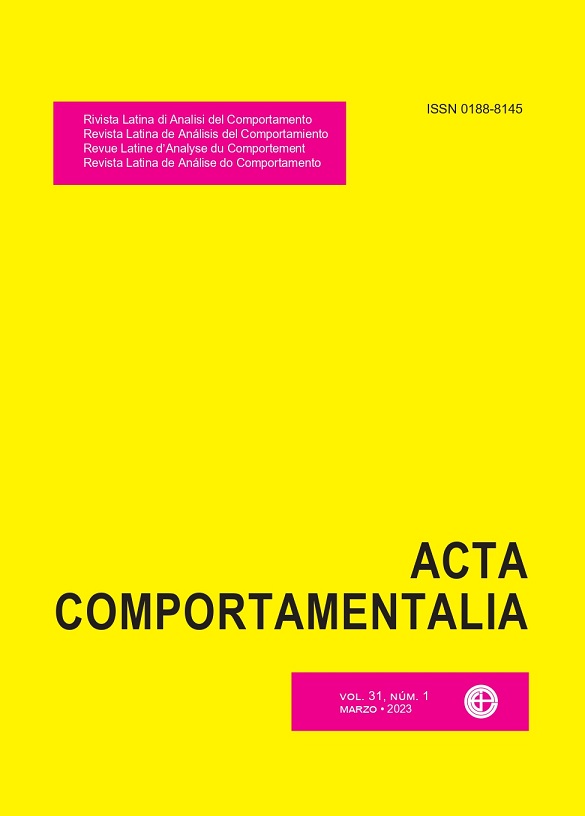Sidman’s stimulus equivalence: Development of the concept between 1982 and 1994
DOI:
https://doi.org/10.32870/ac.v31i1.84997Keywords:
behavior analysis, bradical behaviorism, stimulus control, stimulus equivalence, symbolic behavior, theory buildingAbstract
Through the stimulus equivalence proposal, Sidman helped the behavioral-analytic understanding of phenomena typically studied with a cognitive bias, the development of teaching technologies, and the emergence of divergent explanations and concepts to describe and explain the observed phenomena. This study aimed to analyze the development of the concept of stimulus equivalence in the work of Murray Sidman, between 1982 and 1994, the period between the publication of the first article with new data on stimulus equivalence after 1982 and the first theorizations, by Sidman, about the origin of stimulus equivalence phenomenon. A selection of texts from the period, elaborated by Sidman, was analyzed to identify changes concerning research problems, experimental procedures, conceptual changes, and expansions in its generality. It was found that the concept of stimulus equivalence – as presented in 1982 – was maintained, that hypotheses about its origin emerged, that the dialogue with behavior analysts was intensified, that the phenomenon was studied through contingencies of three and five terms, and that the generality of the concept was expanded in relation to the number of stimuli and the modalities of stimuli that can be part of equivalence classes. Elements that can enrich current debates were presented, such as the discussion on the role of mediating repertoires for the emergence of equivalence relations and on the explanatory or descriptive character of the concept proposed by Sidman. Finally, it is suggested that new studies could expand these debates.
Downloads
Downloads
Published
How to Cite
Issue
Section
License

<a rel="license" href="http://creativecommons.org/licenses/by-nc-sa/4.0/"><img alt="Licencia de Creative Commons" style="border-width:0" src="https://i.creativecommons.org/l/by-nc-sa/4.0/88x31.png" /></a><br />Este obra está bajo una <a rel="license" href="http://creativecommons.org/licenses/by-nc-sa/4.0/">licencia de Creative Commons Reconocimiento-NoComercial-CompartirIgual 4.0 Internacional</a>.






